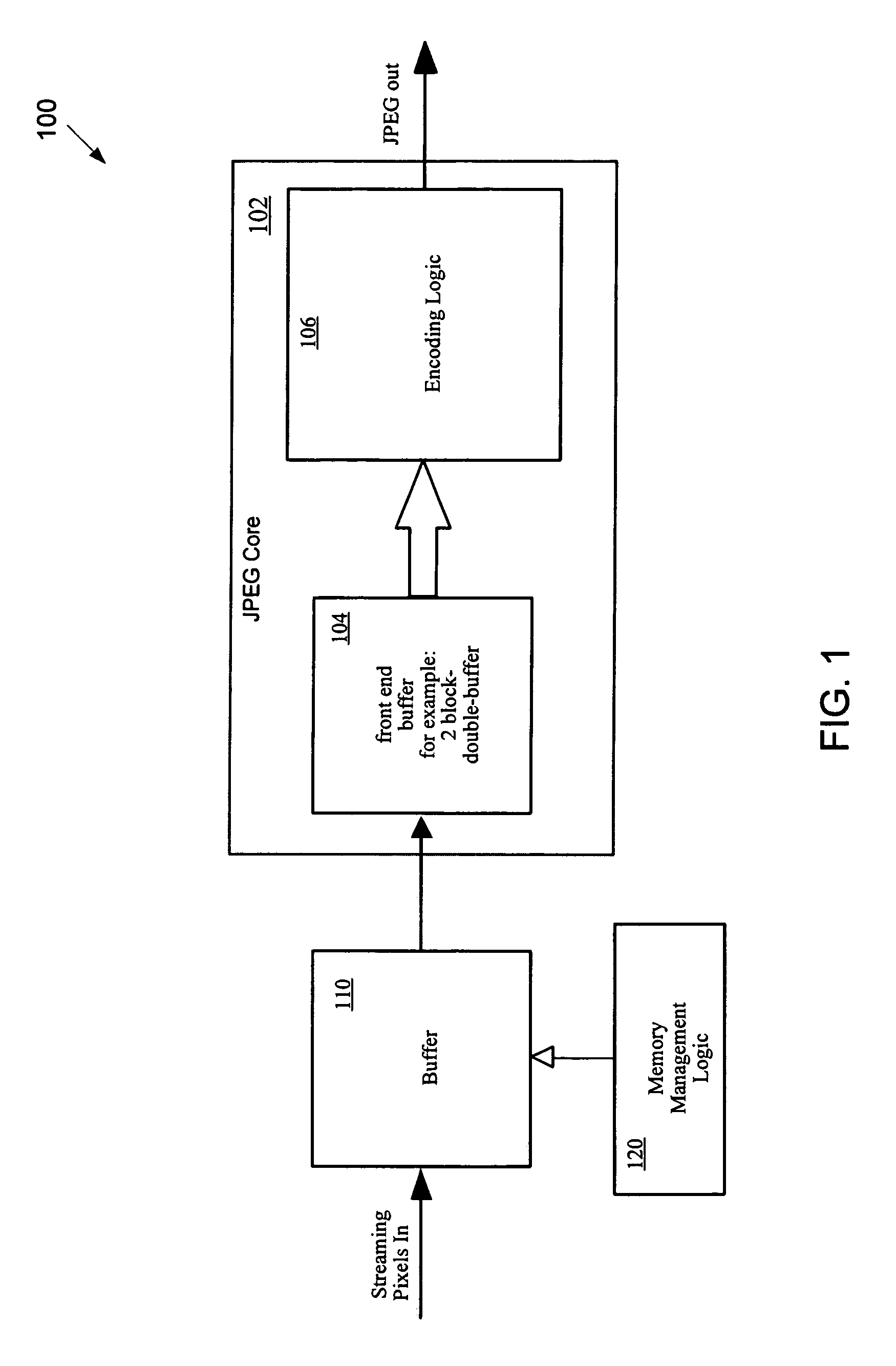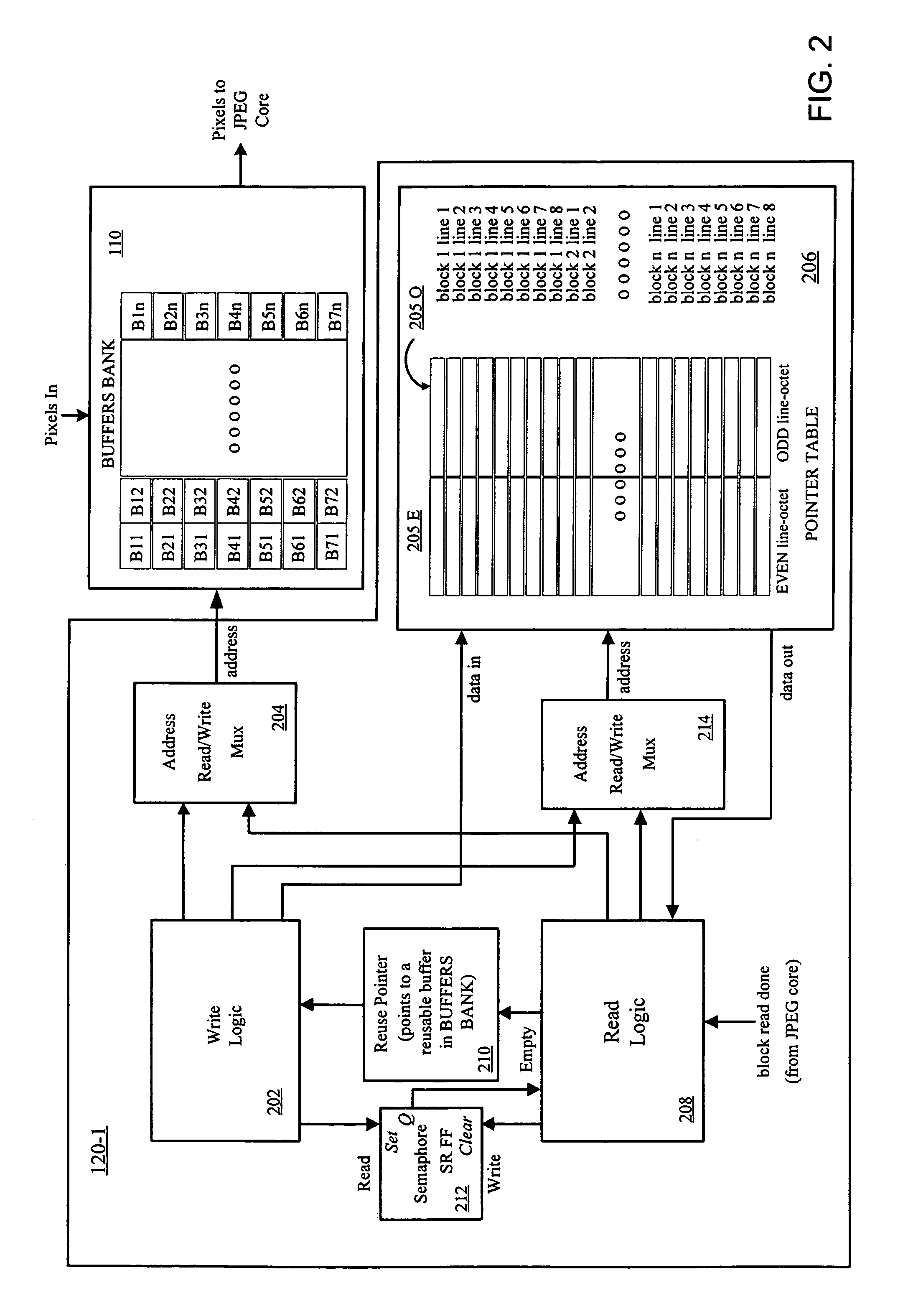Reduced buffer size for JPEG encoding
a buffer size and encoding technology, applied in the field of encoding buffer size reduction for jpeg, can solve the problems of inability to output raw image data in blocks that correspond to the jpeg standard, simple but inefficient,
- Summary
- Abstract
- Description
- Claims
- Application Information
AI Technical Summary
Benefits of technology
Problems solved by technology
Method used
Image
Examples
Embodiment Construction
[0017]Embodiments of the present invention provide image compression systems having memory management logic that allows reduced buffer size for buffering incoming pixels. In order to provide a context for describing embodiments of the present invention, embodiments of the invention will be described herein with reference to JPEG image compression, though this is not a requirement. Those skilled in the art will appreciate that the systems and methods described herein may be applied to many other types of block-based image compression systems.
[0018]The ensuing description provides preferred exemplary embodiment(s) only, and is not intended to limit the scope, applicability or configuration of the invention. Rather, the ensuing description of the preferred exemplary embodiment(s) will provide those skilled in the art with an enabling description for implementing a preferred exemplary embodiment of the invention. It is to be understood that various changes may be made in the function an...
PUM
 Login to View More
Login to View More Abstract
Description
Claims
Application Information
 Login to View More
Login to View More - R&D
- Intellectual Property
- Life Sciences
- Materials
- Tech Scout
- Unparalleled Data Quality
- Higher Quality Content
- 60% Fewer Hallucinations
Browse by: Latest US Patents, China's latest patents, Technical Efficacy Thesaurus, Application Domain, Technology Topic, Popular Technical Reports.
© 2025 PatSnap. All rights reserved.Legal|Privacy policy|Modern Slavery Act Transparency Statement|Sitemap|About US| Contact US: help@patsnap.com



